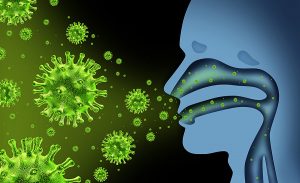 When children/teenagers get expectant, their physical stature is often immature. This means that their physiology is not well-formed to carry the pregnancy and additional care is needed during delivery. In addition to that, their mental state is not well-founded as to endure the extreme emotional imbalances, among them the anxiety on the reactions of their guardians. With no capacities to earn, and many of them being dependent, they remain at the mercy of their often angry and disappointed guardians. All this time, the innocent unborn child suffers with the mother.
When children/teenagers get expectant, their physical stature is often immature. This means that their physiology is not well-formed to carry the pregnancy and additional care is needed during delivery. In addition to that, their mental state is not well-founded as to endure the extreme emotional imbalances, among them the anxiety on the reactions of their guardians. With no capacities to earn, and many of them being dependent, they remain at the mercy of their often angry and disappointed guardians. All this time, the innocent unborn child suffers with the mother.
Lack of knowledge on pre-natal care complicates the matter. Some attempt to conceal the pregnancy to a time when this is no more possible. Once it is exposed, some flee to safer homes, in an attempt to escape the wrath of their guardians. When the guardians reach a point of accepting to live with the challenge, often they are unwilling to take up the financial burden. At times they may not even have the financial muscle to carry the burden.
 Other parents, choose to pour out their frustrations and bitterness upon their children victims uncaring of the effects. The continued challenges during the pregnancies, go on to delivery. These situations not only endanger the baby, but also the young mother. The results can be, autism, still births, abortions, abandonment of new born, infanticide and even suicide. Some families may even guide the young mother towards early marriage. Starting from that point, mother child health is heavily jeopardized.
Other parents, choose to pour out their frustrations and bitterness upon their children victims uncaring of the effects. The continued challenges during the pregnancies, go on to delivery. These situations not only endanger the baby, but also the young mother. The results can be, autism, still births, abortions, abandonment of new born, infanticide and even suicide. Some families may even guide the young mother towards early marriage. Starting from that point, mother child health is heavily jeopardized.
What happens later with the infant’s inoculations and feeding, remains an increased set of troubles. No wonder that malnutrition, child unhealthy conditions and child mortality remain very high in such circumstances.
A society cannot boast being healthy, if the communicable diseases are not well taken care of. Lists and lists of these diseases, and information on the same, are more than ever readily available in the web. Millions of articles on every known disease are available. The continued availability of smart phones allows each to google the right information. Some guide may be needed so that one is able to differentiate between wrong and right information. For those who can, time spent with a medical practitioner is also very welcome.
Three terms come to play in this discussion:
 Infectious –caused by a microorganism and therefore potentially transferable to new individuals; Contagious– capable of spreading from one person to another; and Communicable– can be transmitted from one source to another
Infectious –caused by a microorganism and therefore potentially transferable to new individuals; Contagious– capable of spreading from one person to another; and Communicable– can be transmitted from one source to another
(Definition of communicable diseases, available at www.semmelweis.hu).
For the sake of this write-up, we use the term communicable. According to WHO, communicable diseases are a major cause of mortality and morbidity in disaster situations, particularly, where there is population displacement, collapsing health services, lack of disease control programmes, poor access to health care in urban and/or rural areas, malnutrition, interrupted supplies and logistics, and poor coordination among agencies (Global platform, 2011).
As we address the role of health in relation to social transformation, scare befalls us. In the developing world, immense resources continue to be set aside towards improved health conditions. With the increased corruption however, large percentages of these resources continue to enrich individuals at the expense of impoverished health conditions.
Rather than have pro-active measures, reactive ones take charge when pandemics arise. Even at such moments, and later, the learnings appear still minimal, more so geared towards long term solutions. With the ever-increasing gap between the minority rich and the majority poor, the latter’s access to health facilities continues to be compromised. The result is an unhealthy productive population.
Looking at the particular areas where the communicable diseases are most prone, communicates that it is the same poor majority that is most affected.
What then is our individual role towards the creation of a healthy nation?
Poverty has a significant role to play in an unhealthy situation, while it is also true that an unhealthy situation contributes towards poverty. This makes it a vicious exchange.
Education, too plays a significant role in people’s poverty levels and in people’s ability to remain healthy. It is with this that education, health and household economies have to be addressed together. In the developing world, the speed at which policies are effected is often wanting. Social change dictates that we remain patient as we wait for action by the policy makers and the implementers.
Social transformation however, calls for an active involvement.
The following could be a starting point:
Interest in health matters: The population has little choice but to be interested in health matters. At the prevention level, general hygiene, is called for. While for some getting basic clean water is a challenge, for those who can, undertake the task. This goes a long way in preventing communicable diseases. Other components of hygiene, play a contributory roles towards a healthy nation. Airy rooms could be another point of entry. While those living in slums may complain of having no windows in their small rooms, whatever available openings need to be utilized. At worse cases, an open air walk may suffice.
They that said that cleanliness is next to Godliness cannot have been on the wrong.
When one is diagnosed or experiences symptoms of some ailment, there is need to seek medical intervention. Again, for the poor, one wonders whether to focus on food, on house rent or on health. Education is often a luxury. When one feels unwell, the thought of visiting a public hospital, leaves one shuddering the insulative treatment that some public officers have on patients. The thought of seeking attention in private institutions, allows the mind to sway to the amounts of money that one needs to have. It is not then surprising that the poor opt to get some painkillers off the counter, and only knock at public institutions when they totally have no option. Health institutions under FBOs tend to cushion the challenges. Not only are they a little pocket friendly, but the attitudes of the staff tends to be more amicable. Certainly, apart from the incomes going to the individual staff members, there appears to be some values attached to the operations. For those that can afford these centers, do not hesitate when needed.
This current trend of issues in developing nations, calls for continued thought. While little can be done by the public, indirectly, caution needs to be put into place when electing leaders. Leaders who cannot grant their population free and attainable health fail to be worth the title leaders.
Leaders who have the privileges of seeking assistance from private hospitals using the very same resources granted them by the poor population, need to be well identified. Those whose incomes allow them only to focus on treatment in the developed world, should also be well observed. What is so difficult in bringing those services closer home? While not against seeking health facilities in the developed world, there is a call to have as much of those facilities present in our developing world. Not so far back, it was the same for education. Increasingly however, there is Free Primary Education and Subsidized Secondary and Tertiary Education. Bursaries continue to ensure that more and more of the poor are able to acquire education. The same push needs to be on health.
The National Health Insurance Funds are just but a starting point. For all those that can afford, continue to be part of these institutions. Despite the disappointments that arise when one seeks the rescue and it fails to be realized, there is need for continued pursuit. The option of having no hope, is more detrimental.
The developed world started at that point. Today health is available to all and in equal measure.
Though the entry point in this write-up was through the communicable diseases, a lot of what has been shared also factors in the non communicable. For these however, some are treatable while others become permanent conditions. For all, preventive conditions are much cheaper and in many ways available. Any disease has to be avoided at all costs. The psychological pressure it causes to the individual and to the family, the physical pain it elicits, the financial stress that is imminent, and the cruel stature with which the diseases communicate one’s inability to go out and work, all have to be avoided.
Such avoidances come through nutrition. Sadly, animals appear to be so choosy on diet. Hardly will any herbivore go near a harmful plant. Animals such as the cat, will desist from scavenging. It knows well that scavengers exist. This rule of nature was made bare to us as we studied the food chains. Basic it may have looked, its information and applicability cannot be ignored. All others except human beings adhere to it. What makes it so difficult to follow nature?
As we consider the right foods, lessons from the Asian communities cannot be overlooked. The percentages of vegetables to proteins and to carbohydrates may sound very basic. Yet in the long run, they contribute greatly to our health conditions. Part of what we struggle so much with as we age, are the foods that we ate. Our eating habits continue to hold us accountable. As we culminate on this, may we not forget the ever necessary role that water has in our health conditions.
To our youth, the culture of youthfulness appears incomplete without drug abuse. Cartels continue to enrich themselves with the illicit substances. In the developing world, millions of young minds continue to be lured into the vice. While parents and educators can whine all day and night over the issue, personal responsibility is needed. Individual parents need to be aware that, even when “all” youth are taking part in illicit substances, there are those that keep of that path. What exactly do those parents do differently? One can easily surrender to fate and say, they are lucky.
Social transformative approach to health however, suggests a different position. The sit and wait syndrome is very non transformative. It is a surrender to fate.
It is a clear abdication of the Divine granted responsibility, “Rule the World, all creatures”. It is refusal to be co-creators. Surrender to fate is such a sad position. While it stops one from putting effort to take charge, it does not cushion one to suffer the devastating consequences of not taking charge. Each of us has to do their very best to ensure that their youth pass this trying stage of abuse. Constant reminders, workshops, continued talks at home using the right communicative models, all have to be utilized.
Finally, as we discuss health, exercises remain a no-go-zone to many. It is absurd when one remains too rigid to a point of the medical practitioner subscribing exercises to the patient. What is it in doing less and less of exercises that is in line with materialism? With the continued use of vehicles for movement, the efficiency that this comes with, and the security is notable. However, the forgetting that the body is the only organ that increases efficiency with use, is a common forgotten reality. Athletes have to constantly exercise their muscles for them to set world records. The same is for footballers and those in different sporting events. As we move away from youthfulness, we are constantly reminded the need to remain agile. Only then are we able to wade off various life-style ailments. The body remains active and healthy.
Social transformation is incomplete without the three tripoidal stands. Education, health and household economies are inseparable. The focus of the present write-up has been on health. As you may clearly have noted, the discussion has been led by a non medic. This is in no way purporting to be a medic or an authority in the area. Rather, the position remains social transformative. It is a challenge to those that abandon basic yet significant components of our lives to the world of the unknown.
Such condemnations only adds to our tribulations. Ignorance has never been forgiven, not only by law, but also by health and by wellness. Each is responsible for their health. When that happens, interest on the matter shall be addressed. In addition there shall be attempts to reach out to policy and to other interested areas. All are geared towards human wellness and happiness. This is at the individual, an social levels. All together, it is awake towards socially transforming our lives, of those with whom we interact, and with the environment.
- Definition of Communicable Diseases. Available at semmelweis.hu.
- Global Platform (May 2011). Disaster Risk Management for Health. Fact Sheets: Disaster Risk Management for Health Communicable Diseases. who.int
A household whose members fail to generate sufficient resources to sustain themselves, is poor. At the basic level, a household should be able to generate food, shelter, clothing, education, recreation and security, enough for all her members…



Pingback:EDUCATION: Foundation and Sustenance for Social Transformation – Afro Heritage Consultancies